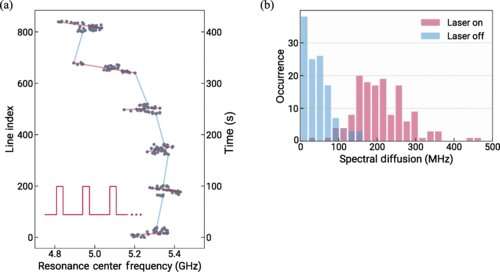A quantum property dubbed "magic" could be the key to explaining how space and time emerged, a new mathematical analysis by three RIKEN physicists suggests. The research is published in the journal Physical Review D.
It's hard to conceive of anything more basic than the fabric of spacetime that underpins the universe, but theoretical physicists have been questioning this assumption. "Physicists have long been fascinated about the possibility that space and time are not fundamental, but rather are derived from something deeper," says Kanato Goto of the RIKEN Interdisciplinary Theoretical and Mathematical Sciences (iTHEMS).
This notion received a boost in the 1990s, when theoretical physicist Juan Maldacena related the gravitational theory that governs spacetime to a theory involving quantum particles. In particular, he imagined a hypothetical space—which can be pictured as being enclosed in something like an infinite soup can, or "bulk"—holding objects like black holes that are acted on by gravity. Maldacena also imagined particles moving on the surface of the can, controlled by quantum mechanics. He realized that mathematically a quantum theory used to describe the particles on the boundary is equivalent to a gravitational theory describing the black holes and spacetime inside the bulk.
"This relationship indicates that spacetime itself does not exist fundamentally, but emerges from some quantum nature," says Goto. "Physicists are trying to understand the quantum property that is key."
The original thought was that quantum entanglement—which links particles no matter how far they are separated—was the most important factor: the more entangled particles on the boundary are, the smoother the spacetime within the bulk.
"But just considering the degree of entanglement on the boundary cannot explain all the properties of black holes, for instance, how their interiors can grow," says Goto.
So Goto and iTHEMS colleagues Tomoki Nosaka and Masahiro Nozaki searched for another quantum quantity that could apply to the boundary system and could also be mapped to the bulk to describe black holes more fully. In particular, they noted that black holes have a chaotic characteristic that needs to be described.
"When you throw something into a black hole, information about it gets scrambled and cannot be recovered," says Goto. "This scrambling is a manifestation of chaos."
The team came across "magic," which is a mathematical measure of how difficult a quantum state is to simulate using an ordinary classical (non-quantum) computer. Their calculations showed that in a chaotic system almost any state will evolve into one that is "maximally magical"—the most difficult to simulate.
This provides the first direct link between the quantum property of magic and the chaotic nature of black holes. "This finding suggests that magic is strongly involved in the emergence of spacetime," says Goto.
#quantumphysics #spacetime #cosmology #theoreticalphysics #quantumgravity
Visit:https://quantumtech.sfconferences.com/
Award Nomination: https://x-i.me/quawards
Award Registration: https://x-i.me/quareg2








